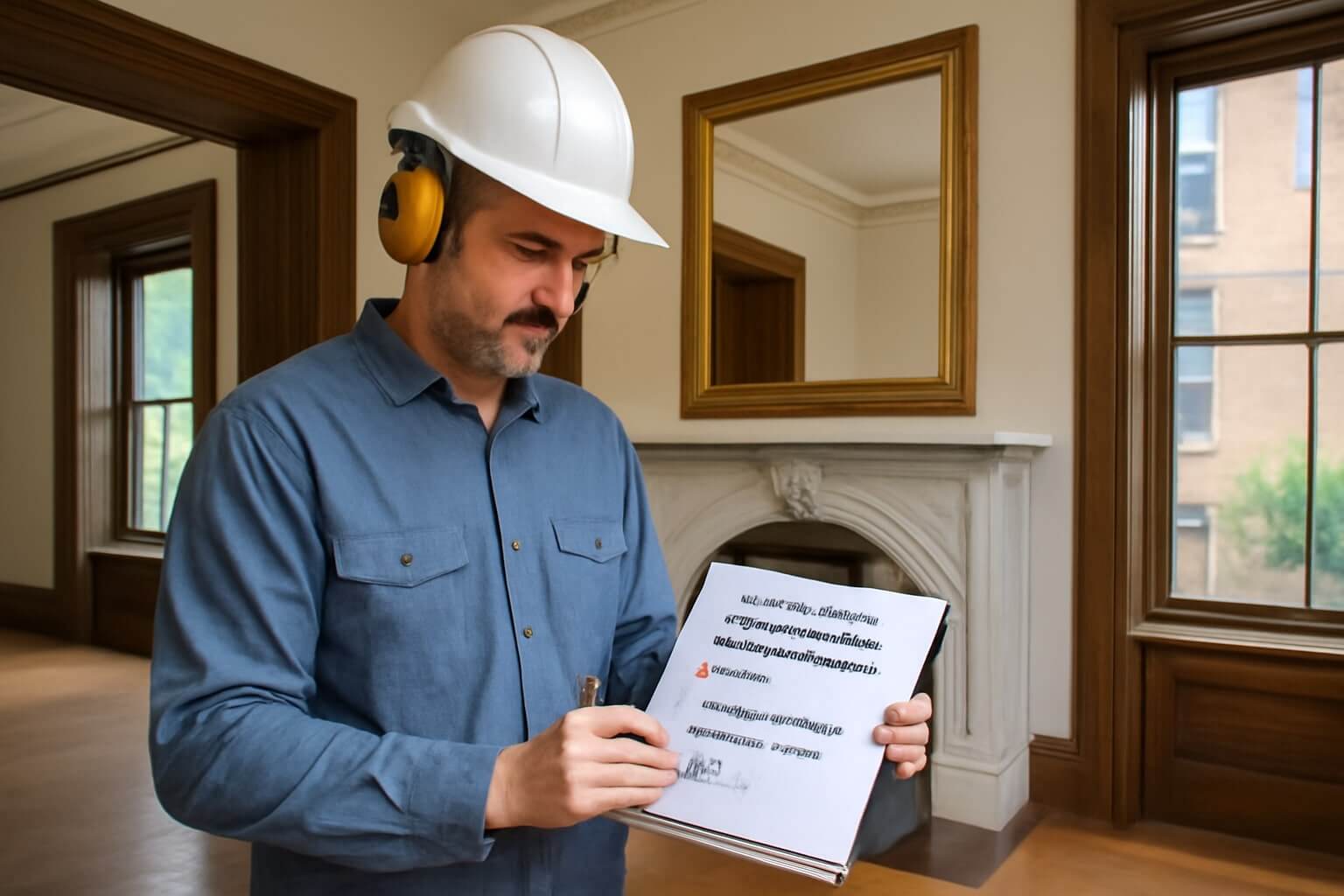When you’re planning a home renovation, mastering the right terminology is essential. It not only helps you communicate effectively with contractors but also guarantees your vision is accurately conveyed. Terms like “framing” and “load-bearing” can make or break your project. Understanding these concepts will empower you throughout the renovation journey. But there’s more to reflect on; let’s explore the key elements that will set you up for success.
Key Takeaways
- Familiarize yourself with basic construction terms like “framing,” “drywall,” and “load-bearing” to enhance communication with contractors.
- Understand design concepts such as “open concept” and the impact of color theory on mood and space.
- Learn common renovation processes including demolition, framing, and finishing touches to anticipate project requirements.
- Master budgeting techniques by estimating costs, exploring financing options, and setting aside contingencies for unexpected expenses.
- Utilize project management tools to track progress, communicate effectively, and ensure all team members understand their roles and responsibilities.
Understanding Basic Construction Terms

When diving into home renovation, grasping basic construction terms is essential for effective communication with contractors and understanding project scopes.
Familiarizing yourself with construction vocabulary like “framing,” “drywall,” and “subflooring” will help you articulate your needs clearly.
You’ll encounter renovation jargon such as “open concept,” which refers to spaces that blend seamlessly, or “load-bearing,” indicating structural elements that support weight.
Knowing these terms not only empowers you but also guarantees that your vision aligns with the professionals’ expertise.
A solid grasp of these concepts will facilitate smoother discussions and lead to a more successful renovation experience.
Key Design Concepts Explained
Design concepts form the backbone of any successful home renovation, guiding choices that affect aesthetics, functionality, and overall flow.
Understanding color theory is essential; it influences mood and harmony, helping you select palettes that resonate with your vision. For instance, warm colors can create coziness, while cool tones evoke tranquility.
Additionally, spatial planning involves arranging spaces efficiently to optimize usability and comfort. This means considering traffic patterns, furniture placement, and natural light.
Common Renovation Processes
Understanding the common renovation processes can streamline your project and minimize unexpected hurdles. Familiarize yourself with essential phases like demolition techniques where you safely remove existing structures, followed by installation processes that involve placing new materials.
| Phase | Description |
|---|---|
| Demolition | Removing old fixtures and materials |
| Framing | Constructing structural supports |
| Electrical | Installing wiring and outlets |
| Plumbing | Adding or relocating pipes |
| Finishing Touches | Painting, flooring, and final adjustments |
Mastering these steps guarantees a smoother renovation experience and helps you achieve your vision efficiently.
Essential Tools and Equipment

To successfully tackle any home renovation, you’ll need a solid set of essential tools and equipment.
Start with basic hand tools like hammers and screwdrivers, then incorporate power tools such as drills and saws for more complex tasks.
Don’t forget safety equipment, including goggles and gloves, to protect yourself while you work.
Basic Hand Tools
Equipping yourself with the right basic hand tools is essential for any home renovation project. Start with essential hand tool types like hammers, screwdrivers, pliers, and wrenches. Each serves a unique purpose; for instance, a claw hammer is perfect for driving and removing nails, while a flathead screwdriver excels at turning screws.
Regular tool maintenance guarantees longevity; clean and oil your tools after use to prevent rust and deterioration. Additionally, consider a tape measure for precision and a utility knife for various cutting tasks.
With these tools in hand, you’ll be well-prepared to tackle any renovation challenge that comes your way.
Power Tool Essentials
While hand tools are vital for basic tasks, integrating power tools into your renovation arsenal can greatly boost efficiency and precision.
Familiarize yourself with power tool types like drills, saws, and sanders, each designed for specific tasks. For instance, a reciprocating saw excels in demolition, while a cordless drill is perfect for fastening.
Regular power tool maintenance is important; clean blades, lubricate moving parts, and check battery health to guarantee peak performance. Always consult the manufacturer’s guidelines for proper care.
Investing time in understanding these tools and their upkeep will enhance your renovation projects considerably.
Safety Equipment Necessities
When tackling home renovations, having the right safety equipment is essential for protecting yourself and ensuring a smooth workflow.
Start with safety gear, like hard hats to shield your head from falling debris. Use protective eyewear to guard against dust and flying particles. Safety gloves are crucial for hand protection while handling tools and materials. Hearing protection is necessary when working with loud machinery.
Don’t forget dust masks to filter harmful particles from the air. For elevated work, invest in fall protection systems.
Finally, always keep a first aid kit nearby to address any injuries quickly. Your safety comes first!
Materials and Their Uses

Understanding the various materials available for home renovation is essential to achieving your desired aesthetic and functionality. Different wood types, like oak and pine, offer unique benefits for furniture and flooring. Insulation materials, such as fiberglass and foam, enhance energy efficiency. Here’s a quick reference table to help you choose wisely:
| Material Type | Common Uses | Benefits |
|---|---|---|
| Wood Types | Flooring, Cabinets, Furniture | Durability, Aesthetic Appeal |
| Insulation | Walls, Attics, Basements | Energy Efficiency, Noise Control |
| Drywall | Interior Walls | Fire Resistance, Easy to Install |
| Tile | Flooring, Backsplashes | Water Resistance, Variety |
| Paint | Wall Finishes | Aesthetic, Protection |
Budgeting for Your Renovation
As you commence your home renovation journey, budgeting effectively is essential to ensuring your project stays on track and within financial limits.
Start with a detailed cost estimation, listing all materials, labor, and potential unforeseen expenses. This proactive approach helps you avoid financial surprises.
Begin your renovation with a thorough cost estimation to prevent unexpected financial surprises.
Next, explore renovation financing options, such as home equity loans or personal loans, to secure necessary funds.
Allocate at least 10-20% of your budget for contingencies to cover unexpected costs.
Navigating Permits and Regulations

How do you guarantee your renovation complies with local laws? Start by researching zoning laws in your area, as they dictate what you can build or modify.
Once you understand these regulations, you’ll need to submit permit applications for your project. Different renovations require different permits, so make certain you know which ones apply to you.
Be prepared to provide detailed plans and possibly pay fees. Don’t skip this step; failing to secure the necessary permits can lead to costly fines or forced alterations.
Always check with your local building department to confirm you’re following the current guidelines.
Working With Contractors
When you commence a home renovation, collaborating effectively with contractors is essential to ensuring your project runs smoothly and meets your expectations.
Establish clear contractor communication from the start, detailing your vision and requirements. Discuss project timelines upfront to align on deadlines and avoid misunderstandings.
Regular check-ins help keep everyone on track and allow for adjustments if delays occur. Be open to feedback, as contractors often have insights that can enhance your project.
Remember, maintaining a respectful relationship fosters a positive work environment, encouraging your contractor to deliver their best work.
Clear communication and realistic timelines are key to your project’s success.
Tips for Successful Project Management
Successful project management in home renovation hinges on meticulous planning and ongoing organization.
To maximize efficiency, prioritize time management by creating a detailed timeline that outlines every phase of the project. Break tasks into manageable segments, and set realistic deadlines.
Effective communication is equally essential; keep all stakeholders informed through regular updates and meetings. Utilize project management tools to track progress and address issues promptly.
Ascertain everyone understands their roles and responsibilities to foster teamwork.
Conclusion
Mastering home renovation terms equips you with the confidence to communicate effectively with contractors and make informed decisions. By understanding construction vocabulary, design concepts, and essential processes, you can navigate your renovation journey smoothly. Don’t forget to budget wisely and stay informed about permits and regulations. With the right tools and a solid project management strategy, you’ll transform your vision into reality, ensuring a successful and rewarding home renovation experience. Embrace the process, and enjoy the results!




